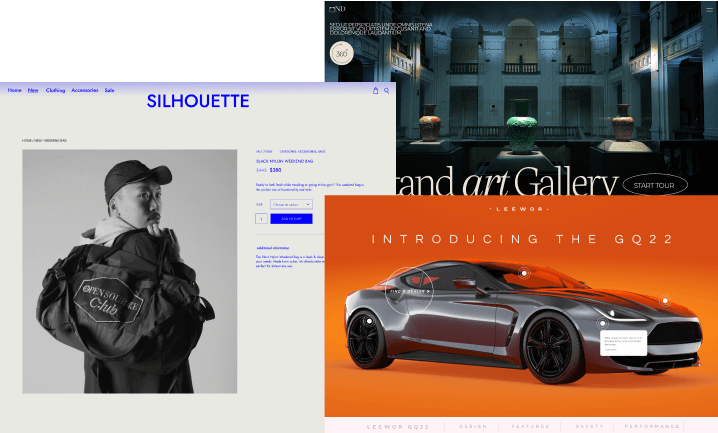In web design, visual weight is the concept that design elements have a distinct weight or seem heavier than others, even in 2D. Visual weight is powerful as it enables visual symmetry, hierarchy, harmony, and balance in designs.
Visual weight is closely tied to symmetry. Achieving design balance and symmetry involves making objects appear visually equal in weight. This means deliberately throwing the balance between elements to draw attention or deemphasize them. The outcome is creating a hierarchy that pinpoints users’ focus to specific areas over others.
Primary Aspects of Visual Weight
Sometimes visual weight is apparent, such as when larger objects look heavier than smaller ones, using more space. However, sometimes it isn’t that obvious, such as with colors where dominant ones may appear heavier. Here are the six main visual weight factors:
- Color: As mentioned, some colors generally have different visual weights, depending on the arrangement. From heaviest to lightest are red, blue, green, orange, and yellow.
- Contrast: Elements that contrast with the background are more prominent than those with a slight one. Contrast can provide visual order and readability.
- Lightness/darkness: Dark colors carry more weight than lighter ones. These colors are potent tools to balance designs.
- Size: A larger object than another identical one is visually heavier and takes up more space. Therefore, size is a prominent visual weight component. For example, a call-to-action button larger than adjacent elements draws attention and increases conversions.
- Density and proportion: Denser (or more compact) elements are heavier than ones that are less dense and more dispersed. This can be achieved graphically by using less white space between objects. Graphically, you can achieve this concept of visual weight by using less whitespace between objects. However, a lot of white space around an object can draw attention because of the contrast created around its position.
- Complexity: Complex patterns or shapes have more visual weight than simple shapes. Unlike easily understood shapes, more complex ones take longer to process, catching more attention.




